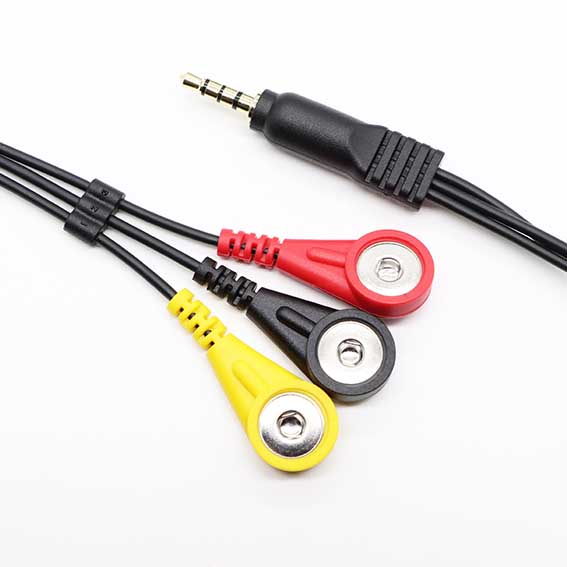製品カテゴリ
- USBアングルケーブル 27
- 医療用ケーブル 26
- USB4ケーブル 11
- POGOピンケーブル 10
- 防水ケーブル 28
- Type C cables and adapter 36
- USB5ケーブル 9
- USB スクリュー ロック ケーブル 26
- コネクタとケーブル 12
- カスタムワイヤーハーネス 14
- ハブ 17
- 電子スイッチサプライヤー 5
製品タグ
ECG シールド ワイヤは 3.5 mm オーディオ オス TO によって延長されています 4.0 電極メスバックル
製品テスト: 短絡, 導電率, 絶縁完全検査, 真新しい精密ケーブル試験機, 信頼性が高く安全な使用
OEM/ODM: 外観, ワイヤー仕様, 色, ハードウェアヘッド, 等. 顧客の要求に応じてカスタマイズおよび生産することができます
カテゴリ: 医療用ケーブル

Conductor Material Copper material



お問い合わせ
メールを待っています, 以内に返信させていただきます 12 必要な貴重な情報を何時間も入手できる.
関連製品
ECG リード線 3.5 ミリメートル 3 極オス肘に 3.5 ミリメートル治療メスバックル 4.0 ミリメートルバックルワイヤー
コネクタ仕様: 3.5mm audio male+4.0 all inclusive copper buckle with nickel plating
Conductor material: UL standard · Bare copper · Tin plated copper/Customizable conductor material
The connector plating: カスタマイズされたニッケルメッキ, 金メッキ/塩水噴霧 24H, salt spray 48H
Product testing: 短絡, 導電率, 絶縁完全検査, 真新しい精密ケーブル試験機, reliable and safe use
OEM/ODM: 外観, ワイヤー仕様, 色, ハードウェアヘッド, 等. 顧客の要求に応じてカスタマイズおよび生産することができます.
USB A TO 4.0mm snap button one to two ECG snap button therapy massage lead wire
ECG cable is considered as the most important medical cable. If you are going to choose ECG cables, you first need to grab information about the same. It means that you need to learn how it actually works.
ECGケーブルの機能は何ですか? 後の段階で決定を後悔したくない場合は、この質問に答えることが必要です. だからこそ、ここでは ECG ケーブルの機能について知っておく必要があります。.
ECG ケーブルの機能
ECG 機能の秘密を明らかにする前に, まず同じことについて知る必要があります. ECG ケーブルの用途.
実は, ECG患者または医療機器は人間の心臓を非侵襲的に監視するために作られています. この装置の主な目的は、患者の心臓疾患を診断することです。.
Now, come to the main thing i.e. ECG cables. 実は, this cable is connected to electrodes. These electrodes are positioned on specific areas on patient’s body to monitor and detect the electrical activity of the heart.
The main function of ECG cable is to transmit the electrical activity of heart back to connected ECG device. Now, the device produces result, which is analysed and diagnosed by doctors or other medical professionals for potential hear problems.
 English
English العربية
العربية Български
Български Čeština
Čeština Dansk
Dansk Nederlands
Nederlands Suomi
Suomi Français
Français Deutsch
Deutsch Magyar
Magyar Italiano
Italiano 日本語
日本語 한국어
한국어 Português
Português Română
Română Русский
Русский Slovenščina
Slovenščina Español
Español Svenska
Svenska Tiếng Việt
Tiếng Việt
